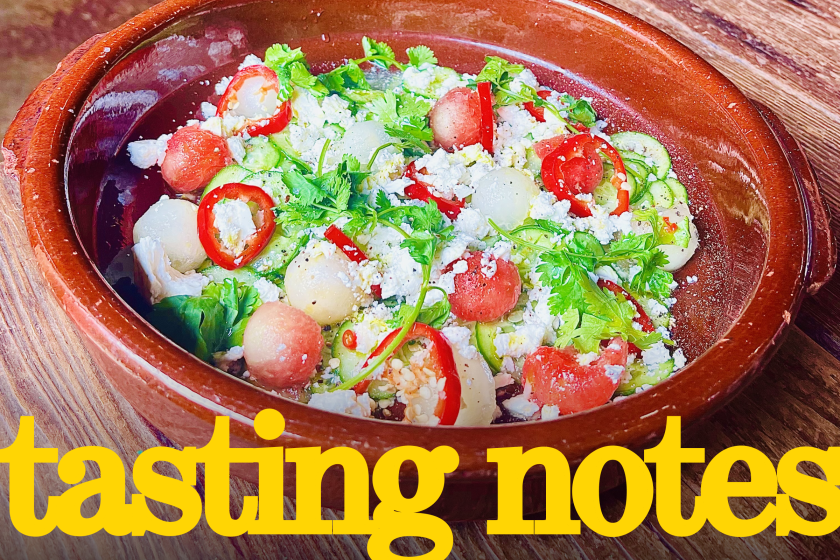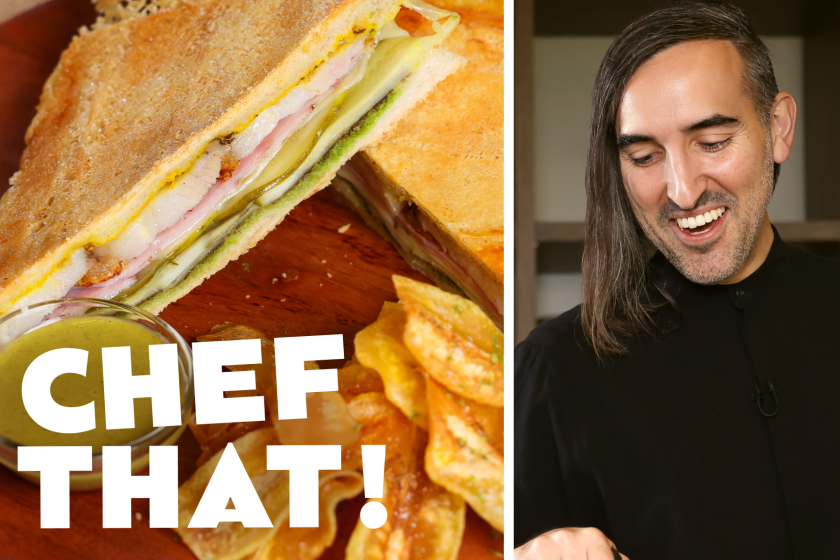At Morihiro in Atwater Village, one of L.A.’s best sushi chefs finds a new home
Morihiro ‚ÄúMori‚ÄĚ Onodera, like the rest of us, had other plans for 2020.
The revered sushi chef ‚ÄĒ a soft-spoken bespectacled figure responsible for training what seems like half of Los Angeles; sashimi specialists ‚ÄĒ had left his post at the upscale Japanese spot Inn Ann in late 2019, two weeks before the restaurant closed for good.
By then Onodera had begun sketching out his next project, an intimate sushi bar in Atwater Village that would serve as a culmination of the decades he has spent mastering the craft.
He envisioned a high-end sushi counter that offered $300 omakase dinners at night. Six seats at a white oak bar. A handful of tables.
But once COVID-19 hit, Onodera knew his business concept had to change.
‚ÄúI decided to make it more affordable,‚ÄĚ he said. ‚ÄúThe food will always be very good quality, of course, but this time I will try to keep the price as low as possible.‚ÄĚ
For those who have at one time or another splurged at one of Onodera’s establishments, this statement is not insignificant. At Mori Sushi, the Michelin-starred West L.A. restaurant that he ran for over a decade before selling it to his assistant, the sushi omakase ran a couple hundred dollars at minimum. The same was true at Shiki Beverly Hills, the ritzy restaurant he oversaw in 2017 before moving to Inn Ann.
But at Morihiro, his new restaurant on Glendale Boulevard that opened in November, he’s preparing takeout bento boxes that start at $27 (vegetarian) and $37 (mixed), a modest price by Onodera standards.
Sushi lovers can get a $50 omakase set that includes six pieces of nigiri, a cut roll, an appetizer and miso soup. Onodera selects all the seafood himself, much of it flown in from Japan: fatty winter yellowtail, baby barracuda, golden eye snapper, etc.
He steers clear of bluefin tuna on principle (it’s extremely overfished), preferring to showcase his love of hikarimono, silver-skinned fish such as gizzard shad, sardine and horse mackerel known for their stronger flavor.
The restaurant space ‚ÄĒ a narrow 1,000-square-foot room with a bare-bones open kitchen ‚ÄĒ is attached to Viet Noodle Bar, a neighborhood Vietnamese restaurant run by Onodera‚Äôs longtime friend Viet Tran. The two worked out a deal that allowed Onodera to build out his own kitchen and dining room while sharing a prep area and restrooms with the larger restaurant next door.
‚ÄúI thought it was the perfect size for making sushi,‚ÄĚ Onodera said. ‚ÄúMany people asked me, ‚ÄėAre you sure you want to open right now?‚Äô But because this isn‚Äôt a big restaurant, it is easier. The small space is comfortable for me.‚ÄĚ
With the restaurant closed except for takeout, Onodera is preparing all the food himself and packaging orders with the help of an assistant.
Eventually the menu will include his version of a traditional Japanese breakfast: warm rice, pickles made from local produce, fresh tofu, a rolled egg omelet, soup, some sashimi or grilled fish.
‚ÄúIt‚Äôs a beautiful variety of breakfast,‚ÄĚ he said, describing his vision of a tray filled with 10 or so small dishes that would cost around $20. ‚ÄúVery simple, but it requires a lot of skill to prepare.‚ÄĚ
The chef‚Äôs longtime fans might notice other trademark touches at Morihiro. An accomplished potter, Onodera crafted all the restaurant‚Äôs ceramic dishware ‚ÄĒ about 300 plates, he estimates.
Then there’s the rice.
Onodera is known for proclaiming that great sushi is 70% rice and 30% fish, and his record speaks to that obsession. Previously he’d partnered with farmers to grow a specific variety of short-grain koshihikari, first in the Sacramento Delta and later in Uruguay.
These days he’s arranged a contract with a rice farmer in the Ibaraki prefecture of Japan because he believes the region produces some of the most exquisite and flavorful grains on the planet.
‚ÄúThe best rice for sushi comes from Japan. Some people ask me, ‚ÄėBut what about California?‚Äô I‚Äôm very sorry, no contest.‚ÄĚ
Not one to limit himself, he’s also installing his own rice polishing machine, which will allow him to mill unhusked brown rice at the restaurant so it retains maximum moisture.
‚ÄúEverything here is original,‚ÄĚ he said. ‚ÄúIt‚Äôs my food, my plates, my vision.‚ÄĚ
Despite the logistical challenges of debuting during the pandemic, Onodera is upbeat about the future of what he calls his ‚Äúdream restaurant.‚ÄĚ Demand for online pickup orders has already shot past his early expectations.
And once dining rooms are allowed to reopen, he eventually wants to introduce those $300 omakase dinners. For now, he’s just as excited about serving $5 rice balls stuffed with sour plum or seasoned bonito flakes.
‚ÄúI‚Äôm 56 years old. I never think about retirement. I‚Äôm excited to work and introduce more people to traditional Japanese food. It can be expensive but not always,‚ÄĚ he said.
3133 Glendale Blvd., Los Angeles, (323) 522-3993, morionodera.com
More to Read
Eat your way across L.A.
Get our weekly Tasting Notes newsletter for reviews, news and more.
You may occasionally receive promotional content from the Los Angeles Times.










